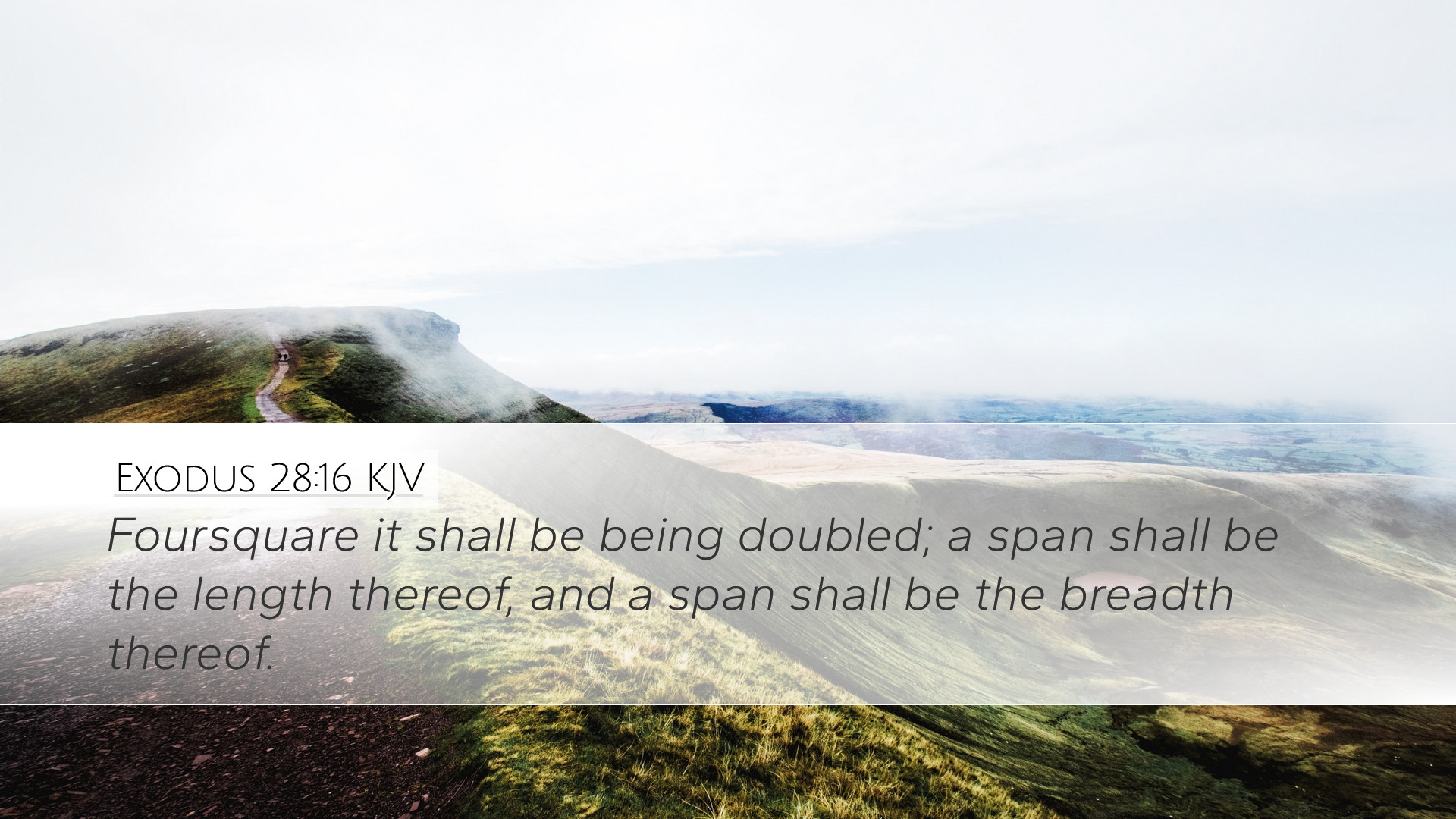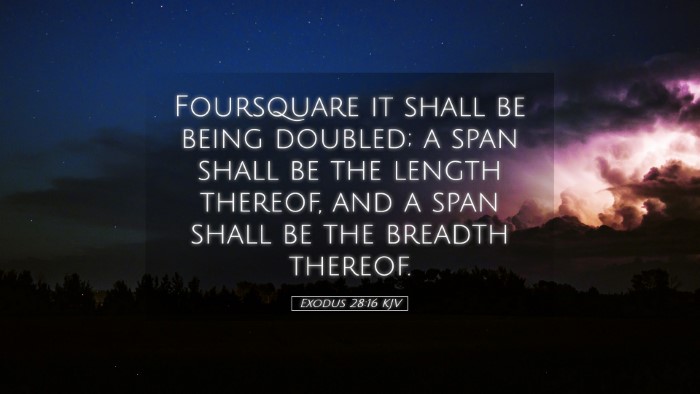Exodus 28:16 Commentary
"And thou shalt make the breastplate of judgment with cunning work; after the work of the ephod thou shalt make it; of gold, of blue, and of purple, and of scarlet, and fine twined linen, shalt thou make it."
Overview
Exodus 28:16 presents the detailed instructions God provided to Moses for the construction of the high priest's garments, specifically the breastplate of judgment. The importance of this breastplate in the ceremonial practices of ancient Israel cannot be overstated. It serves as a significant symbol of divine guidance and the priest’s role as mediator between God and the people.
Context and Significance
The cultural and theological context surrounding the construction of the breastplate is rooted in the Old Covenant’s sacrificial system, where the high priest represented the people before God. As Matthew Henry articulates, the ephod and its associated garments, including the breastplate, portray the majesty and dignity of the priestly office.
- Symbolism: The breastplate embodies judgment, underscoring the responsibility of the high priest to discern God’s will in various matters affecting the nation of Israel.
- Materials: The specified materials—gold, blue, purple, scarlet, and fine linen—are emblematic of purity, royalty, and nobility, suggesting that the ministry of God demands the finest offerings.
Design Elements
In Exodus 28:16, the reference to “cunning work” speaks to the intricate craftsmanship required for the breastplate. Albert Barnes notes that this detailed work signifies God's desire for excellence in worship and service. The breastplate consists of twelve stones, each representing one of the tribes of Israel, which highlights the high priest's role in bearing the people's names before God—something that is critically important in intercessory prayer.
Insights from Commentators
Adam Clarke elaborates further on how the breastplate serves as a reminder of priestly intercession, emphasizing the role of the high priest in addressing the sins and needs of the community before God. The description of the breastplate as "the breastplate of judgment" indicates that it was not only a decorative piece but also a functional one—serving as a representation of God’s approval or disapproval based on how the priest sought to guide the nation.
Theological Implications
Theologically, the breastplate of judgment serves to remind both the high priest and the people of Israel that God is intimately involved in their affairs. The different colors and materials used symbolize various attributes of God, such as holiness (represented by the fine linen) and majesty (represented by gold). These aspects encourage believers to approach God with reverence and awe.
Application for Today
For pastors and theologians today, the passage encourages a deeper reflection on the nature of their own ministry and responsibilities before God. Just as the high priest was accountable for the well-being of the nation, church leaders are reminded of their duty to carry the concerns of their congregants before God, seeking His wisdom in leadership and decision-making:
- Judgment and Discernment: Pastors are called to discern God’s will in matters that affect their communities.
- Symbol of Intercession: Leaders should embody intercessory prayer for their people, mirroring the high priest’s role.
Conclusion
In summary, Exodus 28:16 presents a rich tapestry of meaning that extends beyond ancient ceremonial practice into contemporary Christian life. The breastplate of judgment signifies more than just decoration; it is a profound symbol of the high priest's intercessory role, the divine materials reflecting God's holiness and majesty, and a call to excellence in service. The insights from Matthew Henry, Albert Barnes, and Adam Clarke poignantly remind practitioners of faith of the significance of their calling and the sacredness of their ministry.


